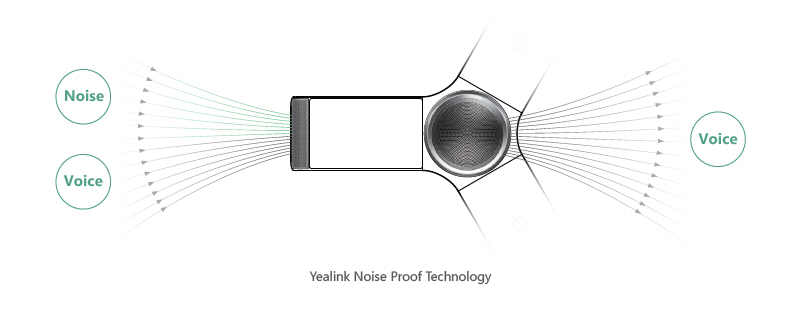Introduction
In today's fast-paced business world, efficiency isn’t just an option; it’s a necessity. Companies are always on the lookout for ways to streamline their operations, reduce costs, and improve communication. Enter the VoIP Phone System—a technology that has transformed how businesses communicate. But what happens when you integrate these systems with existing business tools? That's where the magic happens! In this article, we will explore how integrating VoIP phones with existing business tools can lead to maximum efficiency.
What is a VoIP Phone System?
A VoIP Phone System (Voice over Internet Protocol) allows voice communication through the internet instead of traditional phone lines. http://marioupqm997.tearosediner.net/the-ultimate-guide-to-choosing-the-best-voip-phone-system-for-your-small-business This technology converts your voice into digital signals, enabling you to make calls from anywhere using an internet connection.
Benefits of VoIP Phone Systems
- Cost Savings: Traditional phone systems often come with hefty bills. VoIP systems typically offer lower costs. Flexibility: With VoIP, employees can work from anywhere—be it the office or home. Scalability: As your business grows, adding new users to a VoIP system is usually as easy as a few clicks. Enhanced Features: VoIP phone systems often come packed with features like voicemail-to-email, call forwarding, and video conferencing.
Understanding Existing Business Tools
Before diving into integration strategies, let's take a moment to consider what we mean by existing business tools. These might include:
- Customer Relationship Management (CRM) systems Project Management Tools Email Clients Collaboration Platforms
Each of these tools plays a crucial role in streamlining operations and improving productivity.

The Case for Integration
So why integrate your VoIP Phone System with these existing tools? The answer is straightforward: to create a seamless workflow that enhances productivity and boosts employee morale.
How Integration Improves Workflow
Centralized Communication: All communication channels in one place means no more switching between platforms. Real-Time Data Sharing: When your VoIP system integrates with CRM software, you can access customer information instantly during calls. Task Automation: Automate repetitive tasks such as logging calls or scheduling follow-ups directly in your CRM.Integrating VoIP Phones with Existing Business Tools for Maximum Efficiency
When integrating your VoIP phone system with existing tools, certain steps can help ensure maximum efficiency:
1. Assess Your Needs
Before diving headfirst into integration, it's crucial to assess what your team needs most. Are you looking for improved customer interaction? Do you need better project management?
2. Choose Compatible Tools
Not all business tools are created equal. Ensure that the tools you choose can smoothly integrate with your chosen VoIP Phone System.
3. Implement Gradually
Rather than trying to implement everything at once, start small. Choose one tool to integrate first and expand from there based on user feedback and effectiveness.
4. Train Your Team
Just having integrated systems isn't enough; employees need training on how to use these tools effectively together.
Popular Business Tools Compatible with VoIP Systems
Here are some popular business tools that work seamlessly with various VoIP Phone Systems:
| Tool Name | Functionality | Integration Benefits | |--------------------|-------------------------------------|-----------------------------------------| | Salesforce | CRM | Access customer data during calls | | Slack | Team Collaboration | Instant messaging while on calls | | Trello | Project Management | Update project statuses via calls | | Microsoft Teams | Communication & Collaboration | Video conferencing features |
Common Challenges in Integration
While integrating your VoIP system with existing business tools has numerous benefits, it doesn't come without challenges:
1. Technical Difficulties
Sometimes technology just doesn’t play nice together. Compatibility issues may arise between different software solutions.
2. User Resistance
Change can be hard! Some team members may resist adopting new technologies or workflows initially.
3. Data Security Concerns
Integration can also raise concerns about data security and privacy—especially when sensitive information is involved.
Best Practices for Successful Integration
To overcome these challenges and ensure successful integration of your VoIP Phone System, consider the following best practices:
1. Conduct Thorough Research
Take time to research which integrations work best for your specific needs before making any commitments.
2. Involve Key Stakeholders
Get input from team members who will be using the integrated system regularly; their insights can be incredibly valuable!

3. Monitor Performance Regularly
Once integrated, continuously monitor how well things are working and be prepared to make adjustments as necessary.
FAQs About Integrating VoIP Phones
Here are some frequently asked questions regarding integrating VoIP phones with existing business tools:
FAQ 1: What types of businesses benefit most from a VoIP Phone System?
Small to medium-sized businesses often see significant benefits due to lower costs and increased flexibility but large enterprises also gain from scalability features.
FAQ 2: Can I use my existing telephone numbers with a new VoIP provider?
Yes! Most reputable providers allow you to port over your existing numbers seamlessly during setup.
FAQ 3: How do I know if my current internet connection is suitable for a VoIP system?
You’ll want an internet connection speed of at least 1 Mbps for each simultaneous call; running speed tests can help determine suitability!
FAQ 4: What if my power goes out? Will I still be able to make calls?
If you're using traditional landlines alongside a cloud-based system, you won't have issues; however, cloud services typically require electricity and internet access unless equipped with backup solutions like UPS devices or failover connections!
FAQ 5: How secure are VoIP systems?
Security largely depends on implementation—good practices include encryption protocols (like TLS/SRTP) and setting up firewalls!
FAQ 6: Are there any contractual obligations when signing up for a new provider?
Different providers have varying policies—always read contracts thoroughly before committing to understand terms regarding cancellation fees or service level agreements!
Conclusion
Integrating your VoIP Phone Systems with existing business tools is not just about keeping up with technology trends; it’s about maximizing efficiency in every aspect of your operations. By carefully evaluating needs, choosing compatible applications, implementing gradually while training staff effectively—all while being mindful of challenges—you'll be well on your way toward reaping the rewards of streamlined communication and enhanced productivity within your organization!
In this ever-evolving digital landscape where customer expectations continue rising exponentially—embracing innovations like integrated voip solutions will undoubtedly pave paths toward sustainable growth long-term! So go ahead! Make those integrations happen! You won’t regret it!